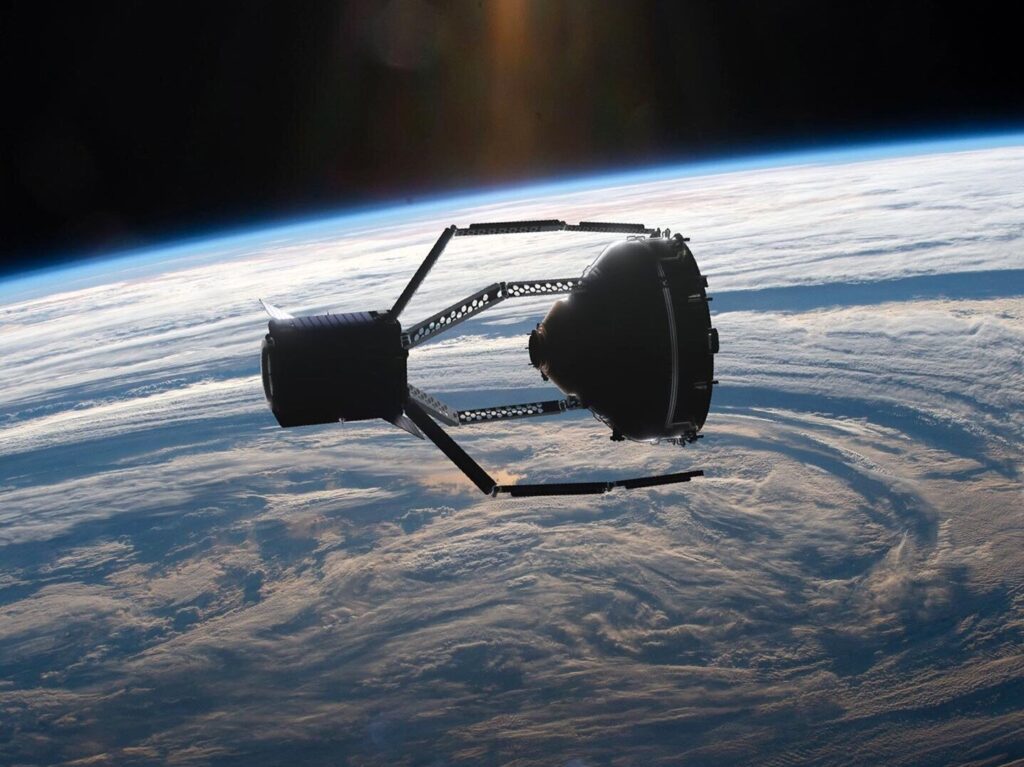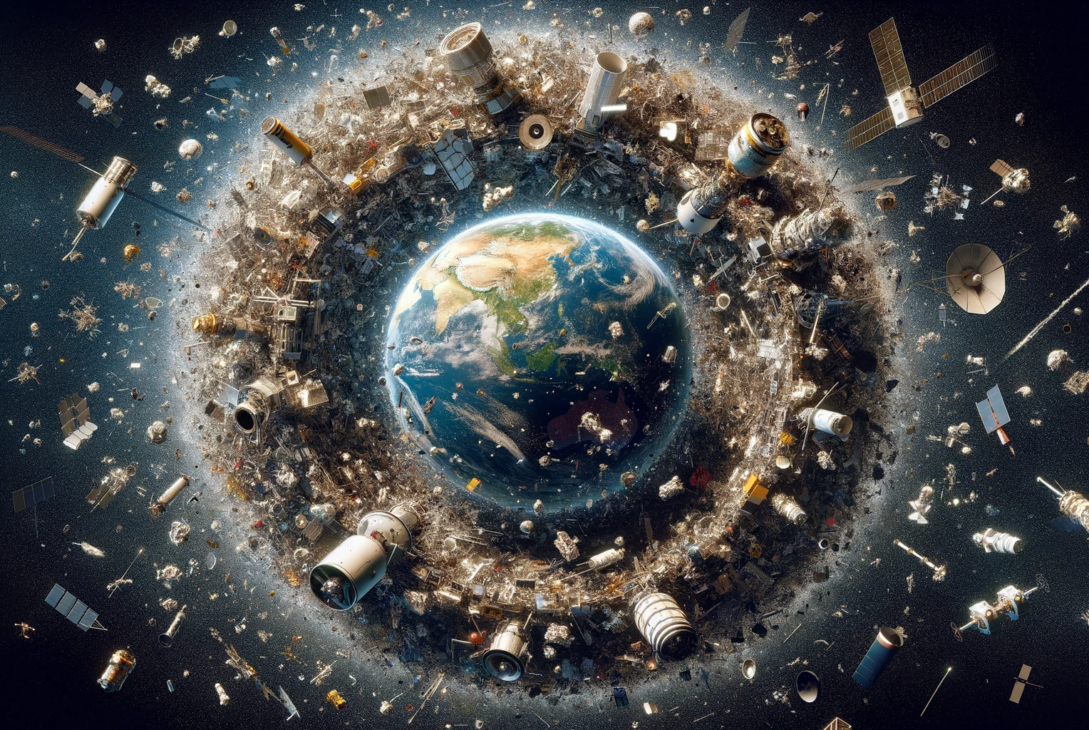In the infinite expanse of the universe, our planet Earth orbits serenely, a blue jewel teeming with life. Yet, surrounding this oasis is an ever-growing cloud of space debris, a testament to human exploration and technological advancement. This ‘space junk’ poses a significant threat not only to our satellite infrastructure but also to the future of space exploration. Understanding the magnitude of this issue and exploring solutions to address it is crucial in preserving the sanctity of our orbital environment.
The Growing Menace of Space Debris
Origins and Current Scenario
Space debris, commonly referred to as space junk, consists of defunct satellites, spent rocket stages, fragments from disintegration, erosion, and collisions. Since the dawn of the space age in 1957, the quantity of debris in Earth’s orbit has escalated alarmingly. The situation worsened with events like the 2007 Chinese anti-satellite missile test and the 2009 collision between an inactive Russian satellite and a functioning American one. These incidents significantly increased the amount of large debris in orbit.
As of the latest estimates, there are over 500,000 pieces of debris tracked by space agencies, ranging in size from tiny fragments to entire defunct satellites.
This space junk orbits Earth at speeds up to 28,000 kilometers per hour, a velocity that could turn even a small piece of metal into a lethal projectile capable of damaging or destroying satellites and spacecraft.
Impact on Space Operations
The implications of space debris are multifaceted. The most immediate danger is to satellite operations. Satellites play a pivotal role in communication, weather forecasting, navigation, and scientific research. Collisions with space debris can disrupt these services, leading to significant economic losses and safety hazards. The International Space Station (ISS) has had to perform numerous maneuvers to avoid collisions with debris. Furthermore, the Kessler Syndrome, a theoretical scenario where the density of objects in low Earth orbit is high enough that collisions between objects could cause a cascade effect, significantly increasing the likelihood of further collisions, is a growing concern.
Challenges in Addressing Space Debris
Technical and Logistical Hurdles
Cleaning up space debris is an endeavor fraught with technical, logistical, and financial challenges. Identifying and tracking small debris is difficult, and the vastness of space makes the retrieval or deflection of debris a daunting task. The diversity in orbits and sizes of space debris further complicates the matter, requiring a range of strategies and technologies for effective mitigation.
International Collaboration and Policy Frameworks
Space is a global commons, and addressing space debris requires international collaboration and agreement. Developing a comprehensive legal framework that dictates responsible behavior in space, debris mitigation standards, and liability for damages caused by space debris is crucial. However, reaching international consensus is challenging due to differing national interests, legal interpretations, and priorities.
Economic and Resource Constraints
The cost of developing and deploying debris removal technologies is substantial. Governments and space agencies must balance these costs against other priorities, while the nascent commercial space industry is still evaluating the business case for debris removal. Moreover, the allocation of resources, both financial and technological, for space debris mitigation competes with other pressing space missions and research endeavors.
Exploring Solutions
Tracking and Monitoring
Enhanced tracking and monitoring of space debris is a fundamental step towards mitigation. Improving the precision of existing surveillance systems can help in accurately cataloging debris, especially smaller fragments. This enhanced tracking capability is crucial for predicting potential collisions and executing evasive maneuvers. Agencies like NASA and the European Space Agency (ESA) are investing in advanced radar and optical systems to expand and refine debris tracking.
Active Debris Removal (ADR)
Active Debris Removal (ADR) refers to the process of physically removing debris from orbit. Various ADR methods have been proposed and are in varying stages of development. These include using robotic arms to capture debris, deploying nets or harpoons to ensnare it, and using lasers to alter its orbit. One of the challenges of ADR is designing missions that are cost-effective and can deal with multiple pieces of debris in a single mission.

Photo taken from Georgetown University Space Initiative.
Spacecraft Design and End-of-Life Planning
Preventing the creation of new space debris is as important as removing existing debris. This involves designing spacecraft with higher reliability to reduce the likelihood of in-orbit breakups. End-of-life planning for satellites, such as deorbiting maneuvers or moving them to a graveyard orbit, is critical in ensuring they don’t contribute to the debris problem. Some space agencies and companies have started incorporating these practices, but a more widespread adoption is necessary.
International Guidelines and Agreements
The development of international guidelines for space debris mitigation is underway. These guidelines include minimizing the release of debris during missions, designing spacecraft to withstand impacts from small debris, and the responsible disposal of spacecraft at the end of their operational life. The United Nations Committee on the Peaceful Uses of Outer Space (COPUOS) has been instrumental in framing these guidelines, but turning them into binding international agreements remains a challenge.
Technological Innovation and Research
The space industry is witnessing a surge in technological innovation that could provide solutions to the space debris problem. Emerging technologies like electrodynamic tethers, which can help lower a satellite’s orbit using Earth’s magnetic field, and propulsion systems for more precise maneuvering, are being explored. Research into sustainable materials and self-healing structures can also contribute to debris mitigation.
Public Awareness and Education
Raising public awareness about the space debris issue is essential to garner support for mitigation measures. Educational initiatives can help in understanding the importance of a clean space environment. Public awareness can drive policy change and encourage responsible behavior among emerging space nations and private space entities.
Future Prospects in Addressing Space Debris
Emerging Technologies and Innovations
As we look to the future, several promising technologies and innovations are on the horizon that could revolutionize how we manage space debris. One such innovation is the concept of space debris recycling in orbit, where defunct satellites and other forms of space junk could be repurposed or recycled to create new structures or fuel. Another area of exploration is the use of advanced robotics and autonomous systems to capture and remove debris efficiently. These technologies, while still in their developmental stages, offer a glimpse into a future where space debris is not just mitigated but also utilized as a resource.
Collaboration and International Efforts
The international nature of space exploration necessitates a global approach to the space debris problem. Joint missions between countries and space agencies can pool resources and expertise to tackle larger debris objects. The establishment of international consortia for space debris monitoring and removal could also be instrumental in coordinating efforts and sharing data. Additionally, collaborations between governments and private companies can leverage the innovation and agility of the private sector while ensuring adherence to international standards and practices.
Policy and Regulatory Frameworks
A robust regulatory framework is essential to ensure long-term sustainability in space. This framework should encompass not only guidelines for debris mitigation but also regulations for satellite launches, space traffic management, and liability in the event of collisions. The development of such a framework requires international dialogue and cooperation, with a focus on creating enforceable and fair regulations that encourage responsible behavior in space.
Space Situational Awareness (SSA)
Improving Space Situational Awareness (SSA) is crucial for effective debris management. SSA involves understanding the current environment in space, including the location and trajectory of objects. Enhanced SSA capabilities will allow for better prediction of collisions and more effective debris avoidance maneuvers. This requires advancements in sensor technologies, data processing algorithms, and international data sharing.
Commercial Involvement and Investment
The commercial space sector’s role in addressing space debris is increasingly important. As more private companies enter space, their involvement in debris mitigation efforts is crucial. This could take the form of investing in debris removal technologies, adhering to strict end-of-life protocols for their satellites, or participating in international debris monitoring initiatives. The development of a commercial market for debris removal services could also be a significant step forward, providing economic incentives for cleaning up space.
Education and Advocacy
Continued education and advocacy are key to maintaining momentum in addressing space debris. By educating the next generation of scientists, engineers, and policymakers about the importance of a sustainable space environment, we can ensure ongoing commitment to this issue. Advocacy for more robust policies and investments in debris mitigation can also come from academic institutions, non-governmental organizations, and the general public.
Conclusion
The space junk dilemma presents a formidable challenge, but it is not insurmountable. Through a combination of technological innovation, international collaboration, robust policy frameworks, and public engagement, we can work towards a future where our cosmic backyard is not only clean but also sustainably managed. The steps we take today to address space debris will have a profound impact on the future of space exploration, satellite communications, and the overall health of our planet’s orbital environment.
As we continue to reach for the stars, it is imperative that we do so responsibly, ensuring that our space-faring activities do not compromise the safety and accessibility of space for future generations. In tackling the space junk dilemma, we hold the key to unlocking a sustainable and prosperous future in space.




